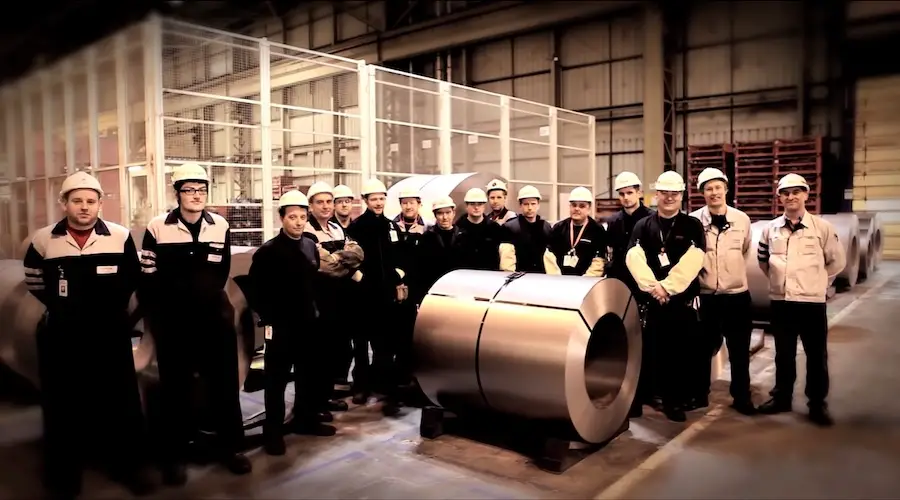12 Ways in Which Toyota Create a Great Workplace

1. More people, less machines The first surprise was that the assembly line was not full of robots. Most of the machinery looked as if it could have been in place 30 years ago. We were told that they have actually reduced the level of automation in recent years. “People are more flexible than machines,” was one response. There was also no SAP or ERP system in evidence. Instead, the key monitoring tool was developed in Excel. “We want a system that adapts to the way we work, not to have to adapt to the way an existing piece of software works.” And this was no paperless office. Charts and written sheets were everywhere. 2. Two improvements from each member every month “Never be satisfied with what you have got” is a core principle at Toyota. Every “member” (as staff are called) is expected to come up with two “kaizens” (or ideas for improvement) each month. Indeed they are trained in fabrication and welding to enable them to be able to test out their ideas. Time is dedicated to kaizen: Each member is allocated 15 minutes a day to identify possible improvements. Managers will try and avoid opposing a change, even if it has been tried before and not worked. A key point of kaizen is personal development: “The learning comes from the journey.” 3. Intrinsic motivation, not money There are no rewards for any financial gain resulting from the improvements people make. “We don’t want our people driven by money but by the desire to improve the process.” There are also no individual bonuses, only collective bonuses. 4. Standardise, then improve There is a sense of empowerment and engagement wherever you go at Toyota. But there is no sense of anarchy. Every process is carefully documented. “Every member is encouraged to improve the current process, but that standardisation makes it easy to return to the old process if the idea doesn’t work.” If the idea works, then the new approach is standardised and written down as a process by the member who created the improvement. “Without standardisation there can be no kaizen,” said Toyota founder Taiichi Ohno. 4. Each Toyota assembly line is different When a new engine is created, or a new car rolled out, each plant will be equipped with the same assembly line and set of standardised processes. However each plant is continually innovating and, although yokoten (sharing) means many innovations get adopted at other plants, some don’t. The expectation that every member is continually seeking improvement means that every Toyota assembly line is different. There is standardisation of processes on each line but seems to be no desire for standardisation across sites. The Toyota plant I visited in Deeside had a slightly old fashioned look to it. But this is apparently the most productive Toyota assembly line on the planet, being the first to achieve an engine every 48 seconds. 5. Small changes matter A kaizen doesn’t have to be huge. One example was a lever that popped up a screw, meaning the member didn’t need to bend down to pick it up. It was estimated to save two tenths of a second. “We build ten million cars a year. Save two tenths of a second on each one and that’s a gain of 560 person hours.” Do one thousand of those a month (two for each of the 500 staff at the Deeside plant) and, if they are shared across the whole company, you’ve gained half a million person hours. 6. Quality Control Circles: Full involvement Twice a month the assembly lines shut down for half an hour as every member gathers into their QCCs (Quality Control Circles). Here they study the data and learn more about what is going on in their section and throughout the company. This may result in further improvements but “that is not the point. The aim is development,” and that is what the carefully laid out QCC plans focus on. 7. A no blame culture “We would never blame the individual. If something goes wrong, it is the process that has gone wrong.” One of the two key pillars of the Toyota system is jidoka. Every member can pull a cord to stop the belt if there is a problem to help eliminate the root cause. Team leaders must never criticise a member for pulling the cord, as “we want them to pull the cord.” “If you blame somebody for failure, all that will happen is people will start sweeping problems under the carpet.” 8. Systems to prevent error I knew that Deming (the US management theorist that had such influence on Japanese methods) was clear that errors are caused by processes not by people. But visiting a Toyota assembly line really showed what he meant. Members will repeat the same process 150 times in a two hour session. It would be easy to miss a step or use the wrong part if the process allowed it. Many of the kaizen improvements specifically prevent that. Buckets have green lights which go off if a hand has reached in to collect a part, so you know if you’ve forgotten it. With one component it was too easy to pick up two, so the delivery was altered to physically prevent that. The member we watched was working alternately on different engines with different spark plugs. If both types of spark plugs were available and the member picked the wrong set, that would not be “human error” but process error. So a plastic shield swings across between the two sets so only the correct one is uncovered. As backup (in case the shield fails) a green light goes on over the correct set of plugs. It is impossible to accidentally use the wrong plugs. It is all fairly low tech but these are simple systems that prevent human error by making it as difficult as possible to make that error. This is known as “poka-yoke” or “mistake proofing” and is intrinsic to the Toyota approach. If your system allows somebody
Get Your People to Set Their Own Targets

“I don’t read many books but I have read the Happy Manifesto,” explained the GCHQ Head of IT, speaking at the recent Spark the Change conference. “And it makes sense. We have found, for instance, that if you let people set their own targets, they set tougher targets and are more likely to achieve them.”




